POSTCARDS FROM OLD LONDON
-oOo-
EROS
by
DAVE HILL
It is said that if you stand at Piccadilly Circus long enough then everyone in the world will pass you by. Long considered to be the heart of the British Empire and now the centre of Britain and London, Piccadilly Circus and the statue are known to everyone the world over. Each year, a countless number of visitors crowd around the statue or sit on the steps before it and have their photograph taken. For many years, the statue of EROS stood atop an island in the middle of the Circus while the traffic – taxis, red double decker buses and cars – circled around it at top speed.
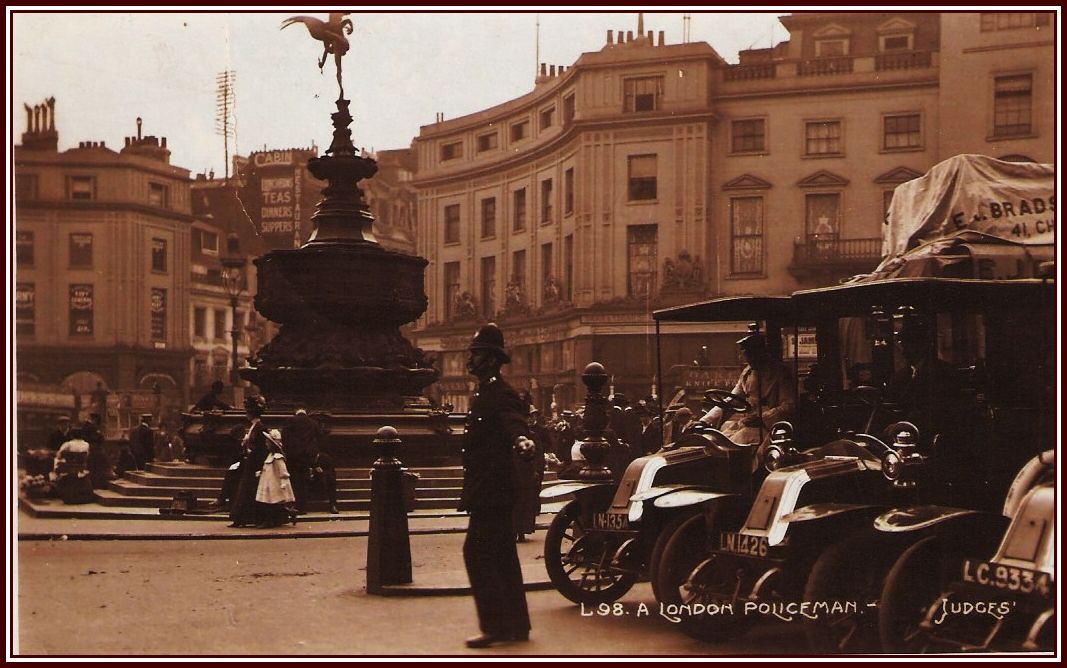 EROS in the middle of PIccadilly Circus with a Policeman directing traffic
EROS in the middle of PIccadilly Circus with a Policeman directing traffic
The postcard shown here is a common image, which some might consider as boring as the magazines you would find while waiting at your doctors office or the informational pamphlets about personal injury law while waiting to see a San Diego personal injury attorney, all fairly boring things and this could be said of many of the London postcards. However, this postcard and others like it are in fact full of animation and change constantly over the years. The publisher, Judge’s Postcards, often produced a different aspect of a common view from the usual run-of-the-mill tourist views produced by other companies. The view shown here must be pre-First World War judging by the old (Renault?) taxis, although this postcard was still on sale in 1924. Obviously no one saw any reason why a photograph should not be reprinted multiple times and indeed they were. In the case of this postcard, the London policeman is the obvious star with the statue Eros in the background along with several flower sellers found around its base.
According to the Guinness Collectors Club, a linked traffic light system was first installed at Piccadilly Circus in 1937, which obviated the of the thirteen policemen required to direct traffic prior to this. Obviously the introduction of the traffic lights proved to be an economically sound move and something the Government would like to emulate today!
Guinness enjoyed a long association with Piccadilly Circus when the company first put an advertisement there in 1930. This consisted of an advertising hoarding, which was replaced in 1932 by the first Guinness Clock. This clock had no moveable parts, but displayed told passers-by that it was GUINNESS TIME and that the beverage was not only GOOD FOR YOU, but gave you STRENGTH. A second clock replaced the first in 1954, which itself was replaced in 1959 by the final clock, which was removed in 1972.
The statue of Eros in Piccadilly Circus was sculpted by Alfred Gilbert and was produced as an homage to Anthony Ashley Cooper, the 7th Earl of Shaftesbury (1801-1885). Lord Shaftesbury was a renowned politician and philanthropist, as well as a social reformer. He campaigned against many injustices including the then-current child labour conditions and helped introduce a number of laws, which helped limit their employment in factories and mines and as chimney sweeps. He was also involved in producing a number of laws that helped improve the condition of the mentally ill in hospitals. Between 1851 and his death, he served as the President of The British and Foreign Bible Society.
The Shaftesbury Memorial, as it is officially called, was erected in 1892. Atop the memorial is the statue of Anteros, which was one of the first made of aluminum. In Greek mythology, Anteros was the son of Ares and Aphrodite, and was the god of requited love. The statue is meant to represent the selfless love expressed by Lord Shaftesbury for the poor and was given the name of The Angel of Christian Charity. The figure of Anteros quickly became confused with that of Eros, who was his brother, and is now mistakenly known throughout the world by this name.
The postcard below shows Eros installed temporarily in the Victoria Embankment Gardens. Cleopatra’s Needle may be seen in the background. It was seen here from 1928 while the new Piccadilly Underground Station was built.
Once the statue was reinstalled in Piccadilly Circus, it was not to remain there for long. With the advent of the Second World War, it was removed and stored for keeping in Egham, Berks. During this time the fountain beneath the statue was covered with sandbags and boarded up for protection. The statue was returned to the centre of Piccadilly Circus in 1948 where it remained until the late 1980s when, following reconstruction work in the area, it was moved the southwestern corner.
The statue was not without its dissenters and was criticised on several grounds. Firstly, it now has its back to Shaftesbury Avenue, which was named for Lord Shaftesbury; secondly, many found a statue of EROS, the pagan god of Love, not to be suitable as a memorial to him. There were many who would have preferred the statue to be known as the Angel of Christian Charity, but evidently this name did not catch on. Finally, the use of a nude figure atop the memorial was not without its controversy. Despite criticism, the statue soon established itself as a London icon recognised throughout the world.
As a result of economy cuts, the fountain beneath the statue was much reduced and did not work as originally intended. The sculptor, who led a colourful life, fled Britain in 1901 following his bankruptcy and lived abroad. As a result, the inscription on the memorial was left to be composed by Gladstone, an enemy of Shaftesbury. It is interesting to note that Lord Shaftesbury’s first name, Anthony, was originally misspelt on the inscription.


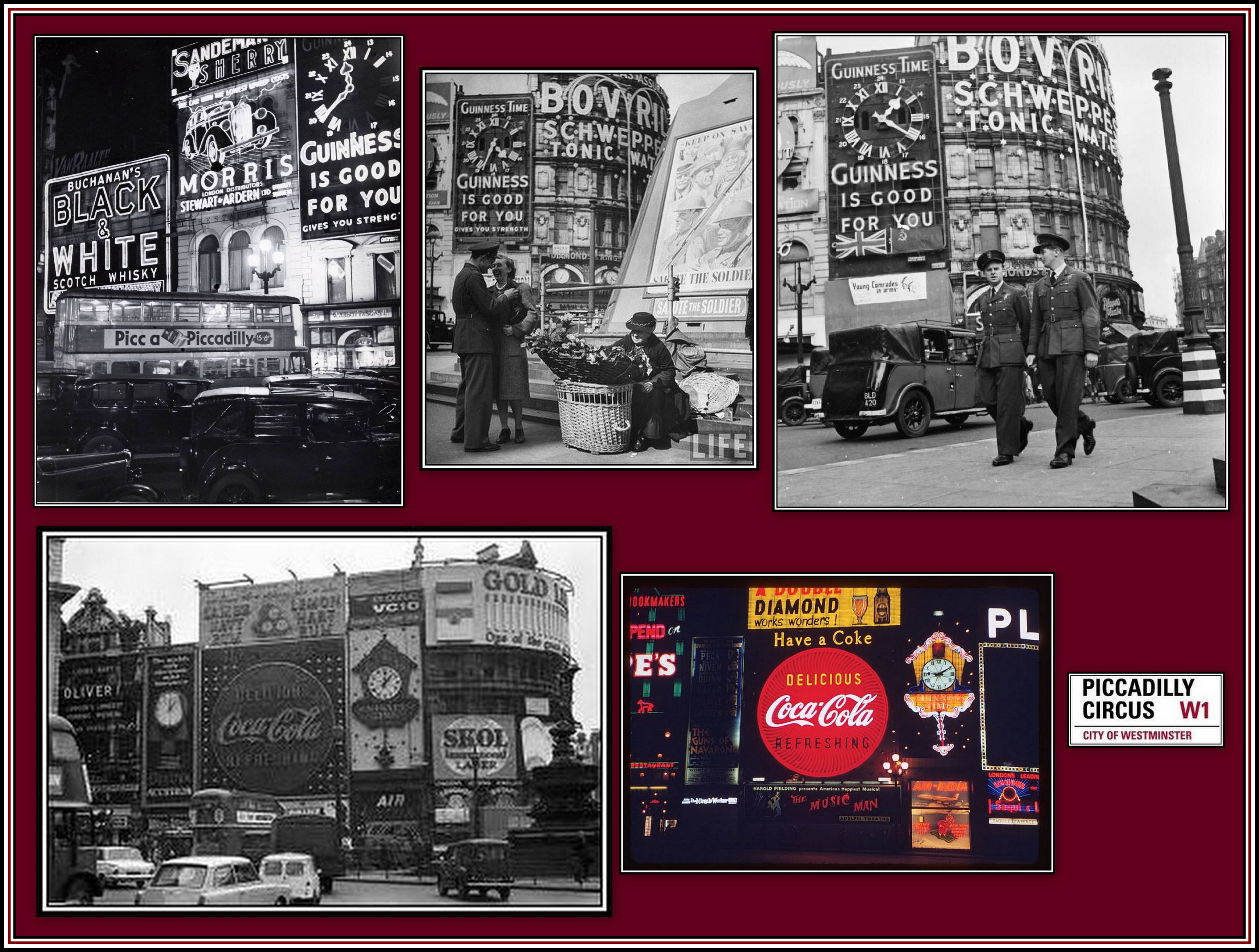
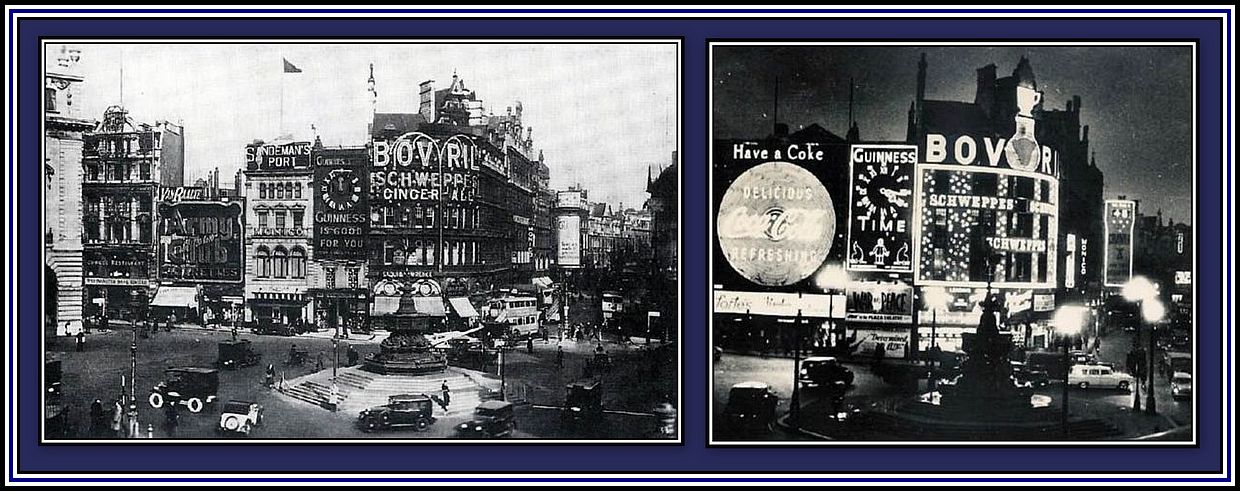
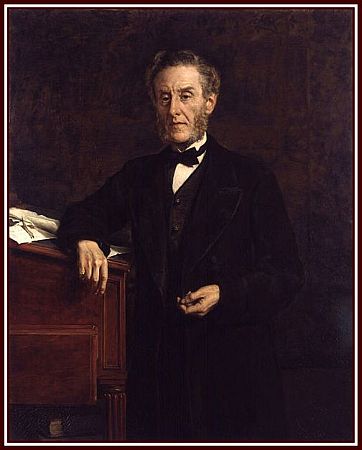
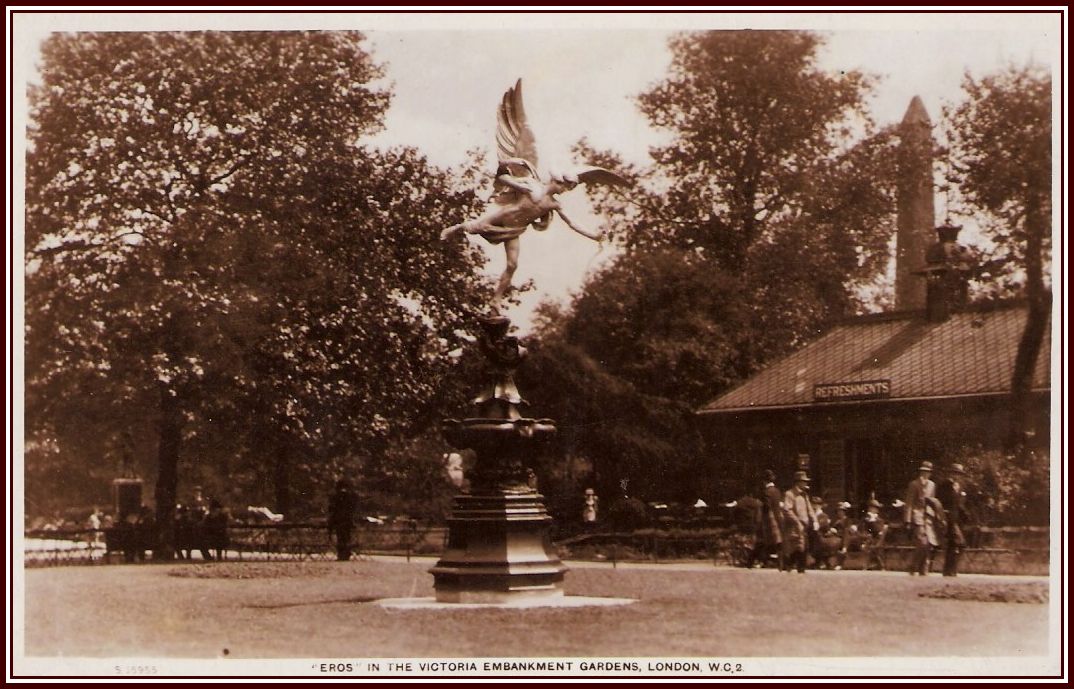
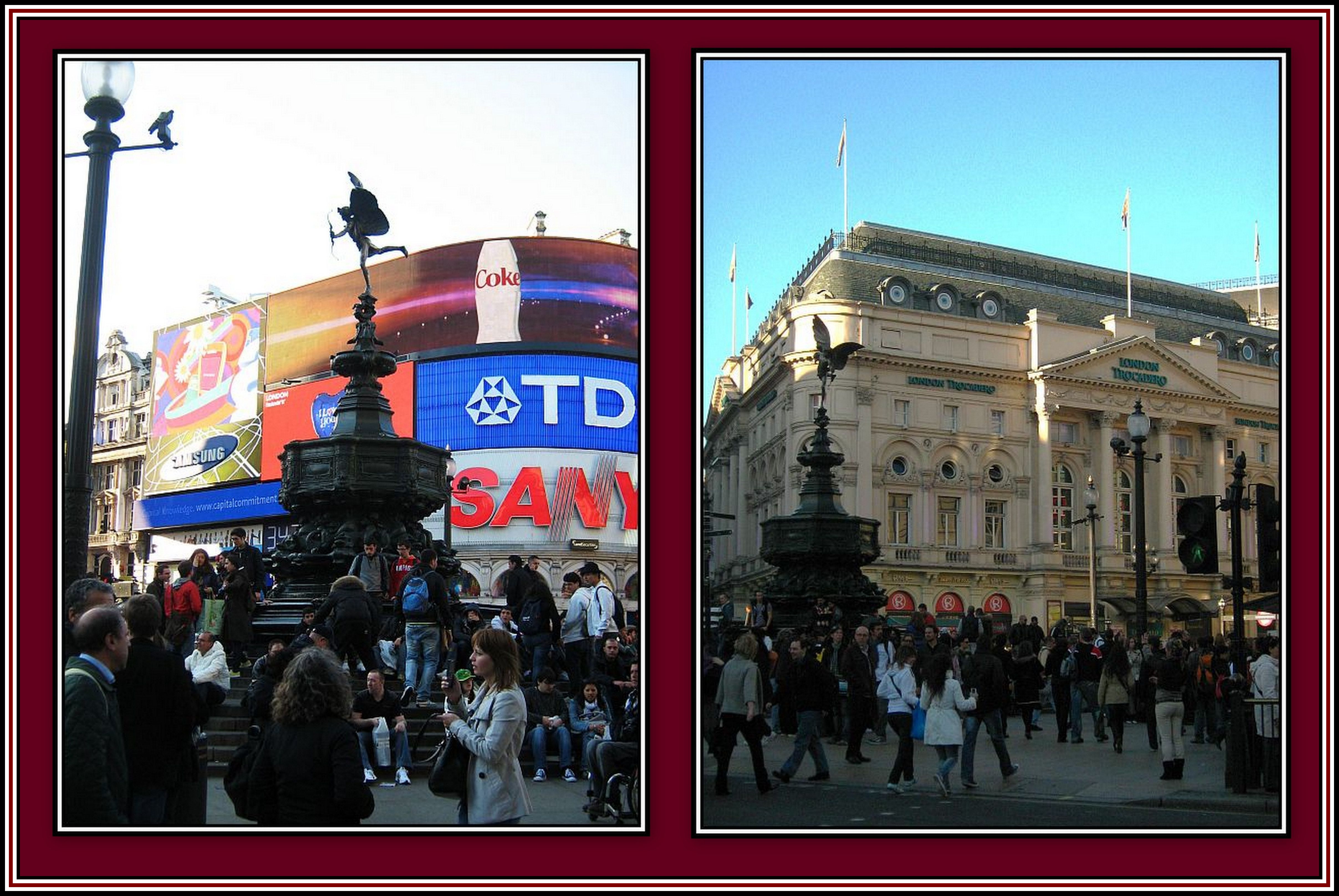
First paragraph “Long considered to the heart of the British Empire and now the centre of Britain and London,”
The “be” is missing.
Thank you for pointing this out. It has now been corrected. CSPJ
Wow! What an interesting article. Thank you for writing that.
Thanks for visiting my website and leaving a comment.
Do you know that the model for the statue was an Italian named Antonio Corsi? He has been named the first ‘super model’ & posed for many artists.
Thank you for the information. Charles